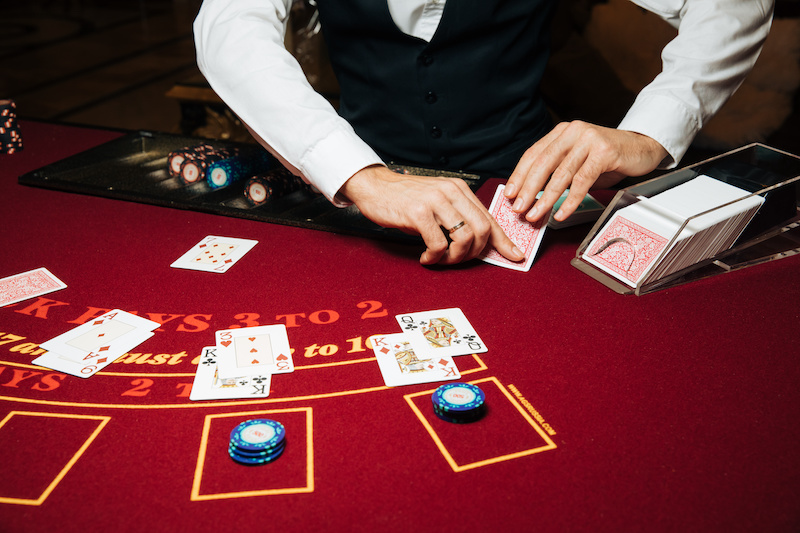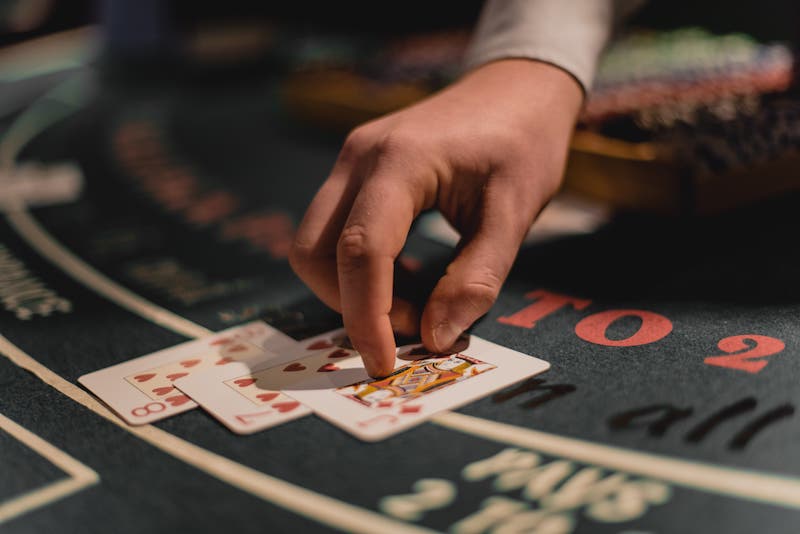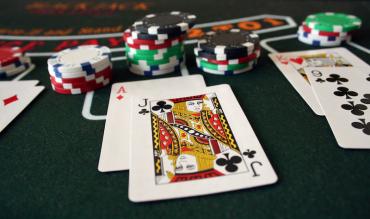Do you know that feeling when you’re sitting at a blackjack table and the dealer keeps pulling blackjacks to himself out of nowhere? In the 1960s, a discrete mathematics professor named Edward Thorp discovered how to invert that situation. Edward O Thorp didn’t only beat the casinos. He spooked them so much that they changed the blackjack rules overnight.
This isn’t the usual rags-to-riches tale. Thorp treated casino games like scientific problems, relying on formulas rather than gut feelings or superstition. His work transformed blackjack from a loser’s game into something you could actually win at. If you were clever enough to follow his system, that is.
But who was Edward Thorp, and why did he decide to dedicate so much of his life to beating blackjack? Keep reading to know everything!
Growing Up Poor and Getting Hooked on Numbers
Edward Thorp was born in Chicago in 1932, in the midst of the Great Depression, a time when money was extremely tight. While his parents struggled to make ends meet, Ed developed an early interest in math and science, largely thanks to his father, who started teaching him mathematics at a young age.
At just 12, he earned a license as an amateur radio operator, one of the youngest in the country. He spent much of his teenage years conducting chemistry experiments, purchasing ingredients from a local pharmacist who sold them to him at cost. That early mix of independence and curiosity stuck with him and would later shape the way he tackled problems, even at the casino tables.
While most of the gamblers went into casinos hoping Lady Luck would smile at them, Thorp saw m-ath puzzles waiting to be solved.
Thorp’s Academic Path to MIT
Thorp’s mathematical talents eventually led him to academic success. After finishing his PhD in math in 1958 with a dissertation about “Compact Linear Operators in Normed Spaces”, Thorp took a spot as a Moore Instructor at MIT, where he taught from 1959 to 1961.
At MIT, he had access to cutting-edge tech, including the IB-M 704, a room-sized computer that was state-of-the-art at the time. He taught himself to program in FORTRAN, a skill that would soon come in handy in a project he hadn’t yet imagined.
The Vegas Honeymoon that Started It All
In 1958, soon after completing his PhD, Thorp took his wife, Vivian, to Las Vegas on their honeymoon. As any regular tourist would do, he tried his luck at the casino blackjack tables, but instead of brushing off his losses and running to the slot machines, something clicked in his mathematician’s brain. He realized that blackjack could be approached as a math problem waiting to be solved.
Back to MIT with access to that powerful IBM 704, Thorp started to spend his nights making blackjack simulations. He analyzed millions of hands, using the computer’s processing power to develop what would soon become the foundation of card counting. While his academic colleagues were focused on traditional math research, Thorp was silently revolutionising gambling, developing a system to beat blackjack.
The Ten-Count System that Broke Vegas
Thorp developed his “Ten-Count System” based on rigorous mathematical analysis. The simplicity of this discovery made it beautiful. The system had players track 10-value cards (which counted as -9) versus everything else (which counted as +4). When the deck got rich in tens, they should bet big. When it got depleted, they should bet small.
This wasn’t some mystical gaming system sold on nighttime TV. It was pure math, and suddenly blackjack flipped from favoring the house to giving a small edge (about 1%) to players who followed the system correctly. To the casinos, used to printing money at the blackjack tables, it was like discovering that clients now had access to the vault keys.
When Thorp’s book Beat the Dealer hit the bookstores in 1962, it became an instant success. The book sold more than 700.000 copies and made the New York Times bestsellers list. Suddenly, every aspiring card counter in America had an instruction manual to beat the house.

Testing the System With Real Money
Thorp needed money to test his theories, so he partnered up with Emmanuel “Manny” Kimmel, a professional gambler with supposed mafia connections. Kimmel invested $10,000, serious money for the time, and they both traveled to Nevada to see if the math and their new blackjack strategy actually worked.
The first weekend was something beautiful to see. According to sources, in about 30 hours of playing in Reno and Lake Tahoe, they transformed those $10,000 into $21,000. At Harold’s Club in Reno, Thorp won $500 in the first 15 minutes.
The system worked exactly as the computer simulations had predicted. But word got around pretty quickly, and Thorp became persona non grata at table after table. He was ready for that, too.
Master of Disguise Meets Suspicious Coffee at the Casino
As casinos caught on to who Thorp was, he transformed into a kind of master of disguise. He started wearing fake beards, sunglasses, contact lenses to change his eyes’ color, and different clothing to deceive the pit bosses. He kept detailed notes about which disguises worked and which casinos had already banned him. But casinos weren’t about to roll over and let some math professor clean them out of their money.
Over the years, stories began to circulate – whispers of dirty tricks used to rattle or sideline him. One night at the Dunes, Thorp reportedly lost the ability to count cards after drinking a coffee laced with sugar and cream. A nurse who was with him at the time believed the symptoms suggested he’d been drugged.
Another tale involved his car’s gas pedal sticking on a winding mountain road, forcing him to downshift and use the handbrake to survive. A passing driver supposedly said the mechanism looked deliberately tampered with.
Whether these stories were exaggerated over time or grounded in truth, they added to Thorp’s growing mythos. What’s certain is that the pressure and potential danger were enough for him to start looking for safer ways to make money.
How the Casino Industry Fought Back
The casino industry’s first response was pure panic. In April 1964, the Las Vegas casinos did something unprecedented: they changed the blackjack rules overnight. They severely limited doubling down and splitting pairs, basically trying to make the game unbeatable again. But it spectacularly backfired.
Player traffic fell to almost nothing. Players simply stopped showing up, and within months, casinos had to revert back to the original rules.
Their long-term response was much smarter. Casinos ditched single-deck games for multiple-deck "shoes" that made counting much harder. They started shuffling early when counts got favorable, invested millions in surveillance systems, and created databases to track known advantage players.
Nowadays, casinos have taken this even further. They started using machines to continuously shuffle cards, invested in RFID chips to track every bet, and began using facial recognition software. Think about it, all this because of what a math professor did in the 1960s. It’s amazing when you think about it.
Beyond Blackjack: The World’s First Wearable Computer
Edward Thorp didn’t stop when he managed to dominate blackjack. Working with Claude Shannon (the father of information theory), he built the world’s first wearable computer in 1961.
This device, the size of a cigarette pack, worn in a shoe with switches controlled by the toes, could predict roulette results by tracking the speed of the ball and wheel. The system gave them an astronomical 44% advantage over the house, something unprecedented. MIT officially recognizes this device as the first wearable computer, decades before anyone had heard about smartwatches, Google Glas,s or Apple Vision.
Eventually, Nevada banned every electronic device in casinos, with legislation specifically aimed at “blackjack and roulette devices,” which is still on the books today.

From Card Counting to Wall Street Billions
While Thorp’s winnings at the casinos were great at the time, they weren’t life-changing. His true fortune came from applying the same principles to Wall Street. Edward Thorp net worth today is estimated at $800 million, earned through decades of running hedge funds that achieved 20% annual returns.
His Princeton/Newport Partners trust fund operated for 19 years without a single losing year, applying the same probability theory and risk management strategies that he had developed for gambling. Thorp realized that the financial markets were essentially the “biggest casino in the world,” but with better odds and without pit bosses ready to drug your coffee.
Why Thorp’s Work Still Matters
At 92, Thorp remains sharp and still shares insights on gambling and investing. He was inducted into the Blackjack Hall of Fame in 2002 as one of its first members, a formal nod to his role in shaping advantage play. His approach to gambling changed the game. He showed that solid math, combined with discipline, could beat systems built to favor the house.
And that idea still holds up: treat gambling like a problem to be solved, manage your risk, and never forget that casinos are in it to win.
Thorp proved that, sometimes, you can beat the house, not with luck, but with logic. His legacy is everywhere: in strategy guides, in casino surveillance rooms, and in the players who sit down at the table with a plan, not just a wish.
If this article interests you, explore other topics like roulette strategy and craps strategy.


